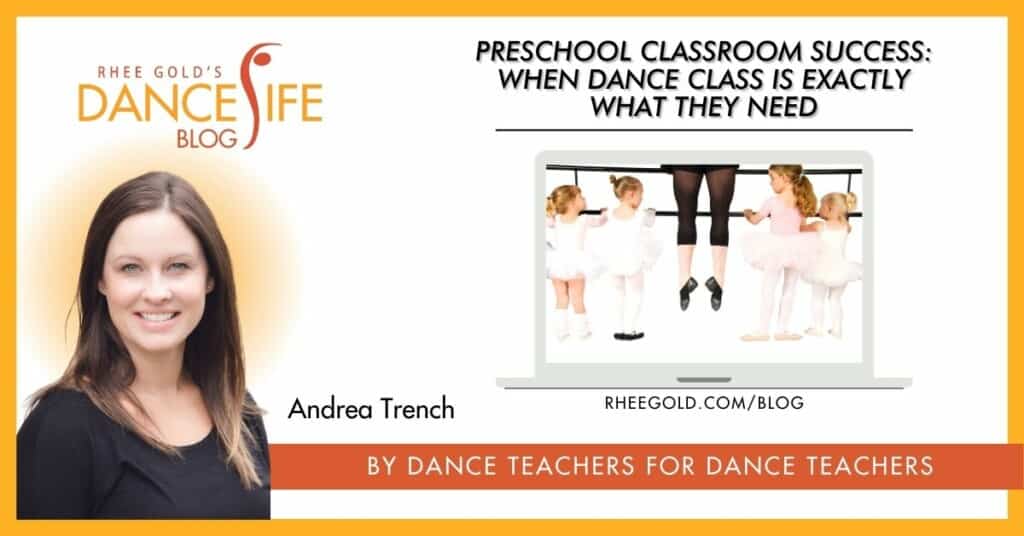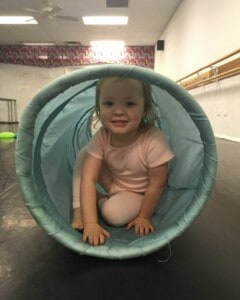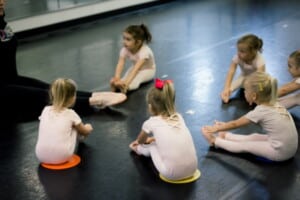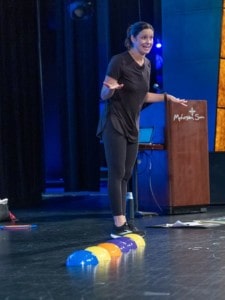When Dance Class is Exactly What They Need

Have you ever told a caregiver their young child just isn’t ready for dance class yet? Yea, me too. We’ve all had the child who never listens, runs around the studio, or cries and doesn’t participate. It’s easy to tell the caregiver to return when they’re a little older. But, what if I told you that dance class is probably exactly what that child needs?
Research tells us that movement is how our brain develops. Research also tells us that our brains develop the most between the ages of 0-5 with the most rapid growth between the ages of 0-3. Therefore, telling a caregiver their child isn’t ready for that particular class may hold more truth than telling them they aren’t ready at all.
Long ago, I began a mission to never turn away a dance family because their child “wasn’t ready”. It hasn’t always been easy, but it has proven to be extremely rewarding. If you would like to join this mission, keep reading! I’m sharing the steps I took, and continue to take, to make my dance classes a place for all.
Evaluate and Evolve
First, we evaluate and evolve. I am constantly evaluating myself, my students, and my lessons. Children continue to change over the years, therefore my teaching should also change with them. In my experience, I have found increased container and screen time during the early years have caused my dancers to need more support in their foundational skills such as balance, coordination, and strength (to name a few). Those who grew up like me, did not have screen time or fancy baby gadgets. Therefore, it is a huge disservice to keep the same routine and expectations from years past, because brains and bodies are evolving differently in our current society. I want to deliver a successful class, where my students discover the joy of movement and progress at the skills needed to reach our dance goals. So I must continue to evaluate and evolve in order for my classes to continue meeting the needs of today's developing child.
Class Offerings
Next, we offer a class that includes a caregiver. I will always have a new child start in the independent class for their age group. However, I know there are some three, maybe even four-year-olds, who are not ready for independent classes. If an independent class is not working for a particular child, I will suggest to the caregiver a class where they can join them. Once our older dancers become familiar with the teacher and class environment, they are usually ready to come in alone before the season is over. Having a caregiver/tot class option has helped many little ones start their dance journey successfully.
Whatever it Takes
Lastly, I do whatever I can to support the child and caregiver. I was always the teacher that wouldn’t allow caregivers into the studio if it was an independent class. I did it once with a 2-year-old class and it didn’t work as expected, so I vowed to never do it again. Fast forward nine years, I am now teaching at a studio that is not my own nor does it offer a caregiver/tot class. When two new students joined my class in January and were not at the same developmental stage as my students who began in September, I had to think fast. I knew what they needed developmentally and I knew this class would help them reach those goals. So, I invited their caregivers into the class. One caregiver had to dance so the child would dance and the other caregiver had to keep their child safe because she was extremely curious about everything in the space. Three months later and they still come into the room, but the amount of progress that has been made has blown us all away. We will soon begin transitioning them out of the room, but until then, we are doing whatever it takes to support them so they can reap the benefits of movement during this crucial time of brain development. I wasn’t going to give up and I was hoping the caregivers wouldn’t either. Seeing the progress is the greatest testimonial for toddler dance one could ever witness!
I know there are situations where a child may need more time before joining a class. However, I will exhaust all avenues to support the child, and family, before turning them away. I hope these tips help you do the same! If you would like to learn more about movement and its connection to brain development, check out the book “A Moving Child is a Learning Child” by Gill Connell and Cheryl McCarthy.
Andrea Trench is dedicated to helping dance teachers create and deliver content that is research-based and developmentally appropriate for children under the age of 6. Her primary focus is classroom management, conceptual teaching, and foundational movement skill development in early childhood dance education. In addition, Andrea uses her 12 years of experience as a partner in a dance studio to inspire, equip, and empower educators.









